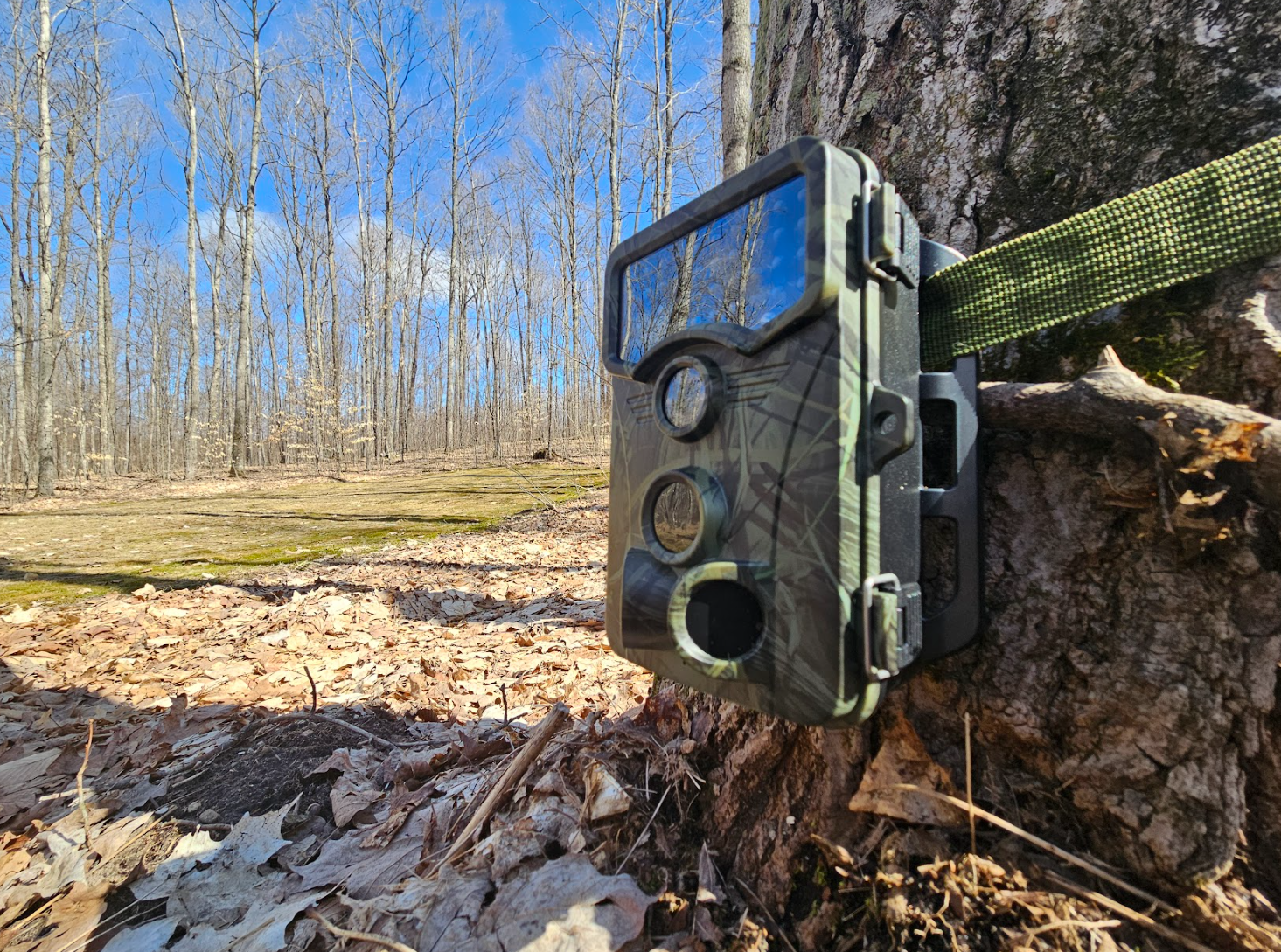
Wildlife research through cameras in the wild
Trail cameras are invaluable tools in studying wildlife. Firstly, they provide researchers with a non-invasive method of observing animals in their natural habitats. Unlike traditional methods that may disturb or alter animal behavior, trail cameras allow for remote monitoring without direct human presence. Additionally, trail cameras can operate day and night, capturing valuable data on animal activity patterns, behaviors, and interactions around the clock. This continuous monitoring provides researchers with a comprehensive understanding of wildlife dynamics over time. Furthermore, trail cameras can be placed in remote locations, expanding the scope of research and enabling the study of elusive or nocturnal species that are otherwise difficult to observe. Our research focuses on abundance and richness to determine the best conservation strategies.
A trail camera placed at the base of a tree ready to collect valuable data from animals passing by.
An intern placing a camera near the rehabilitation facility to determine what wildlife is nearby.
A researcher placing a trail camera along the base of a tree along a game trail to maximize detections.
A video of a local opossum moving through the underbrush at night.
A white-tailed deer detected on the trail camera at night using infrared technology.
Equipment used by researchers to study local wildlife populations.
This research is generously supported by the Overholts Family.






